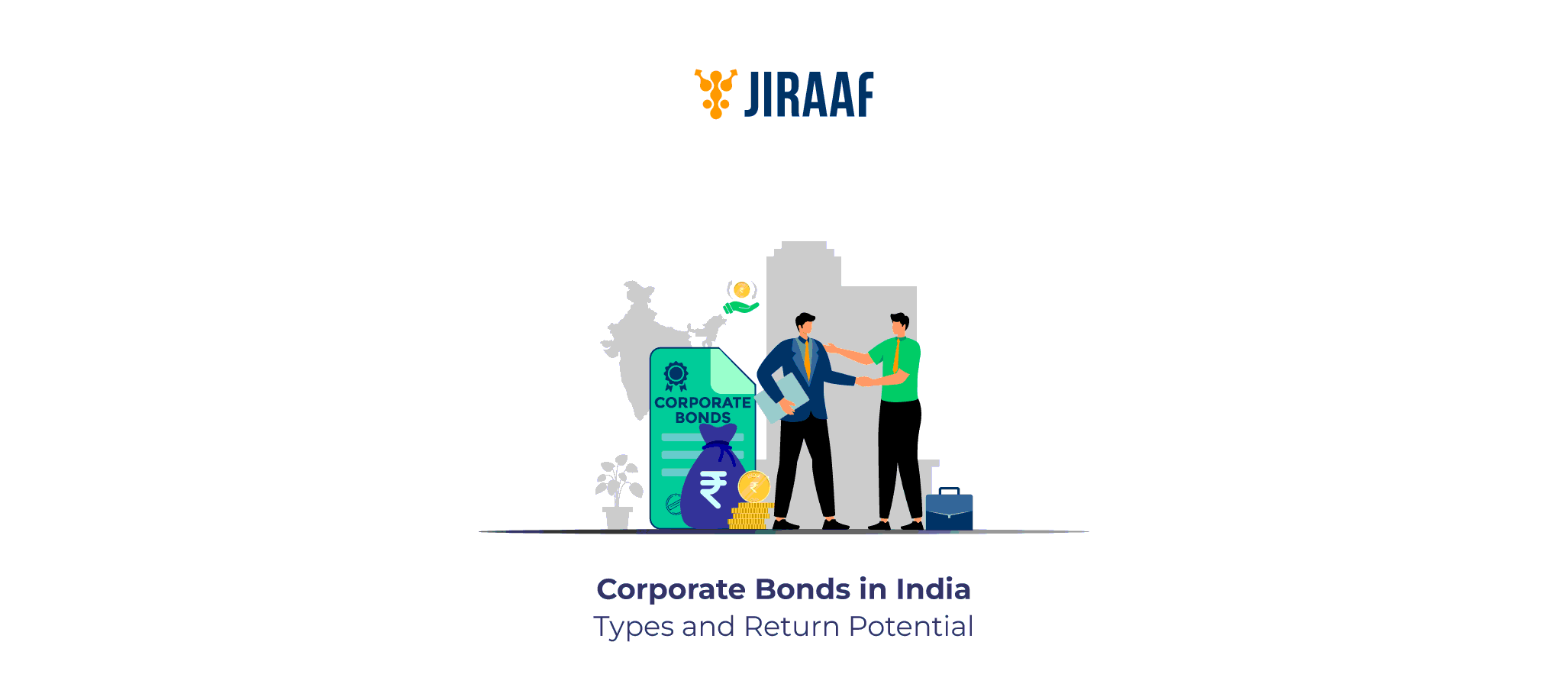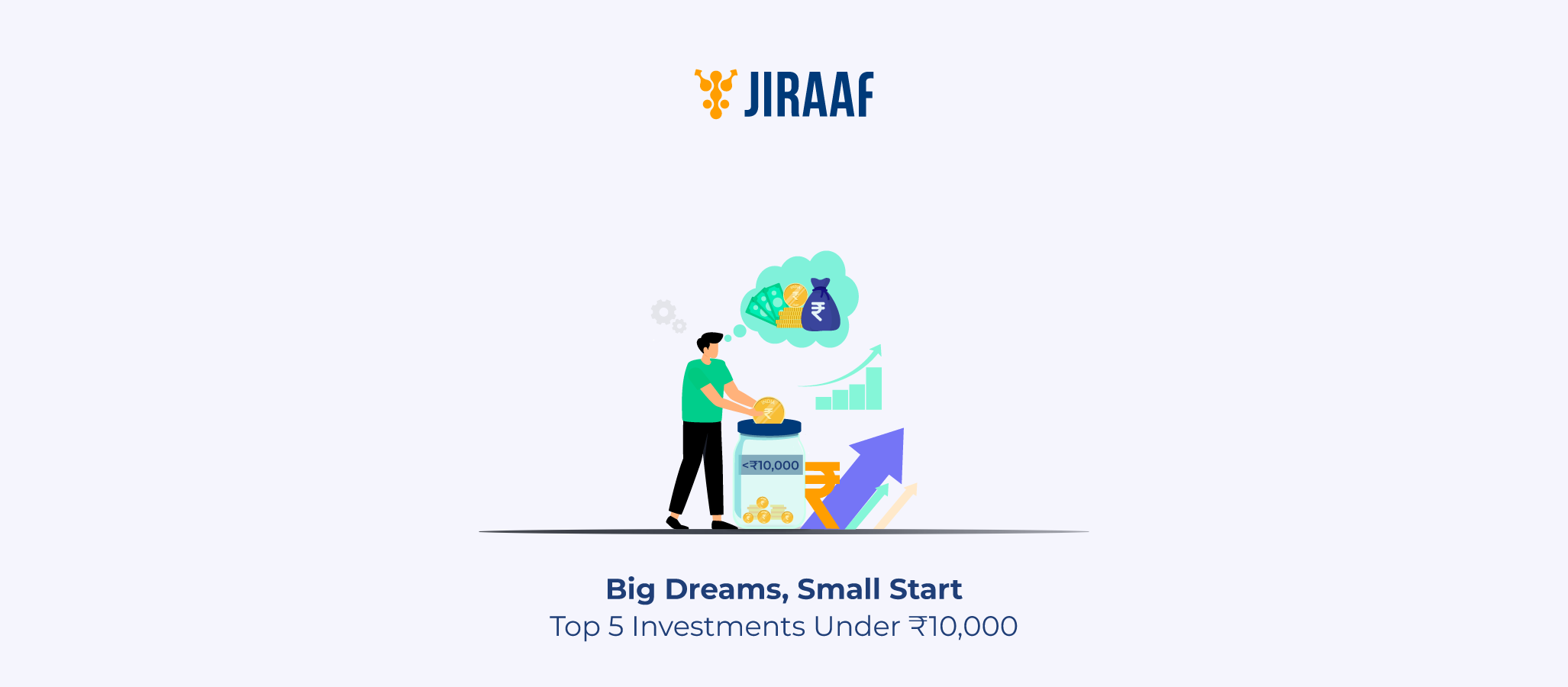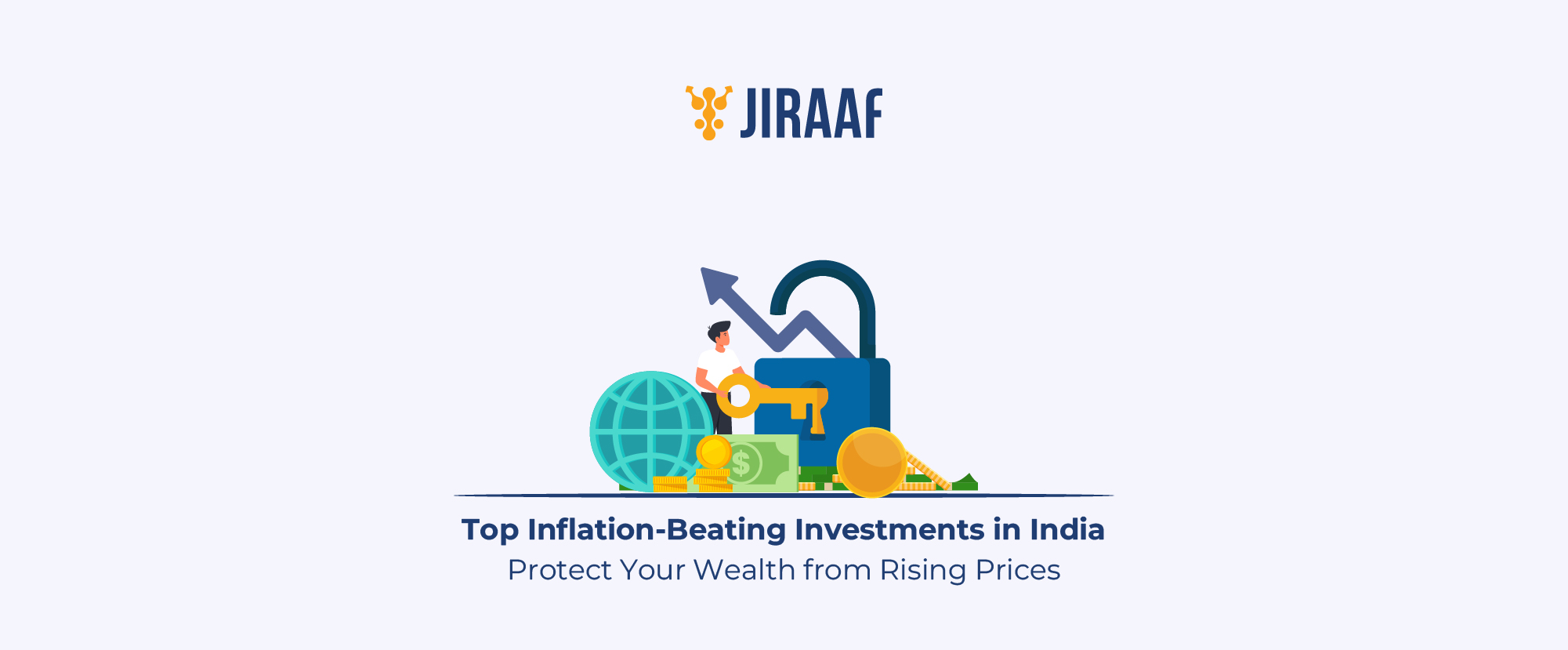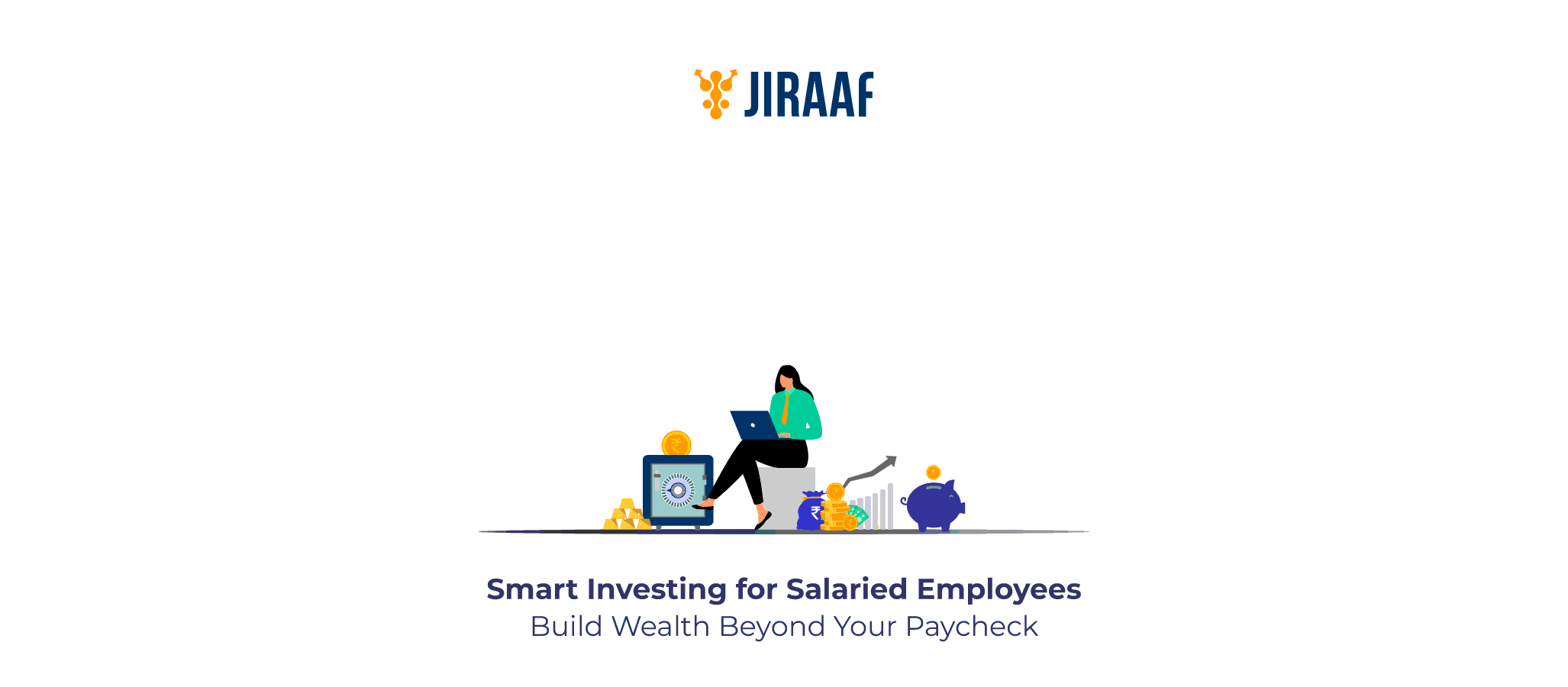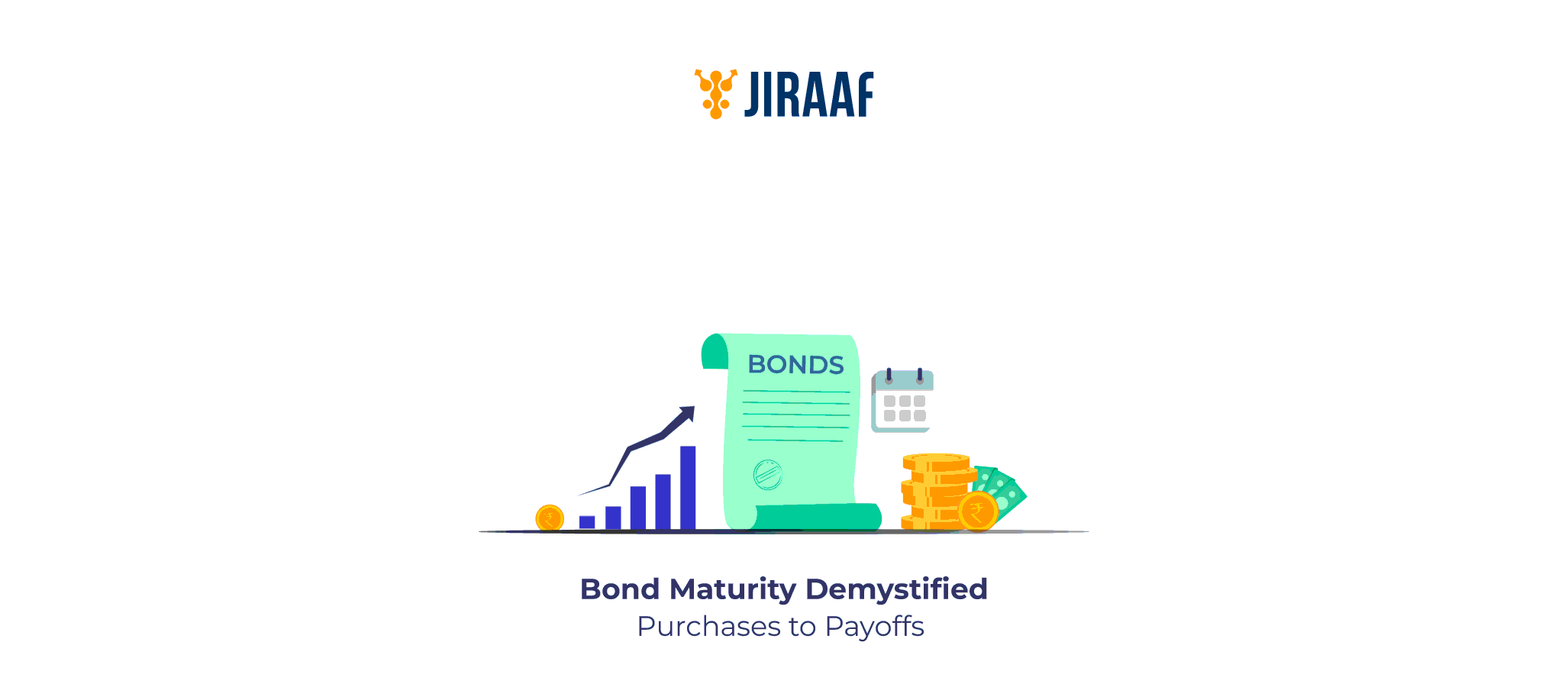Bonds in India are often grouped by who issues them: government, municipal bodies, or corporations, each serving a different purpose and catering to different types of investors. That part is familiar to most of us. But here’s where things start to get tricky: when it comes to corporate bonds, how do you decide which ones actually fit your portfolio?
Corporate bonds may share a name, but not a structure. Some are backed by assets, others purely by trust. Some mature in a few years; others stretch across decades. Naturally, not every type will serve the same investment goal. Understanding these distinctions can help you pick the bonds that align best with your strategy and comfort with risk.
What are Corporate Bonds?
A corporate bond is simply a loan you give to a company. Instead of borrowing from banks, companies raise funds directly from investors like you by issuing bonds. In return, they promise to pay interest at regular intervals and return the principal upon maturity. It’s a structured, transparent way for businesses to grow and for investors to earn stable, potentially higher income compared to traditional savings options.
But not all corporate bonds are created equal. Their risk, return, and structure vary widely depending on how they’re designed and what they aim to achieve. Let’s explore the different types of corporate bonds in India to understand how each fits into an investor’s portfolio.
Types of Corporate Bonds in India
We’ll look at some of the finest categories of corporate bonds available in India, not just by name, but by how they behave. To make it simple, we’ll view them through two lenses: risk and return. This helps you understand not only how much you can potentially earn, but also what level of stability or volatility comes with it.
Corporate bonds can be classified based on three main aspects—bond rating, interest rate structure, and features. Let’s unpack them one by one.
Based on Bond Ratings
Bond ratings are like the financial trust scores of bonds. They indicate how likely the issuer is to pay you back on time. These ratings are assigned by agencies like CRISIL, ICRA, and CARE, and they directly influence both your risk exposure and your potential return. In simple terms: the higher the rating, the safer the bond; the lower the rating, the higher the reward—but also the higher the risk.
These bonds come from financially strong companies or well-established public sector undertakings (PSUs) with proven track records. They carry higher credit ratings such as AAA, AA, A, or BBB, signaling stability, and reliability. For investors, they are like the steady anchor of a portfolio, offering consistent interest income and minimal default risk. While they may not deliver eye-catching returns, they make up for it with peace of mind and predictable cash flows. If your priority is capital preservation and steady income, investment-grade bonds are where you start.
You can even explore curated lists of such high-quality bonds and compare their yields and credit profiles on Jiraaf.
High-yield (Junk) Bonds
On the other end of the spectrum lies high-yield, or “junk” bonds which are issued by companies with lower credit ratings (BB or below). These issuers are often in growth phases, restructuring, or operating in industries where risk is higher. But higher risk often brings higher potential returns. These bonds compensate investors with significantly higher interest rates compared to their investment-grade counterparts. For an investor with a strong risk appetite and a keen eye for research, these can be rewarding—provided you’re willing to accept volatility and occasional defaults.
The important thing is analyzing the issuer’s fundamentals and using reliable tools like bond analyzers to assess whether the extra yield is worth the risk.
If credit ratings tell you who to trust, the next step is understanding how you earn; and that brings us to the interest rate structure.
Based on Interest Rate Structure
The way a bond pays you interest, whether it’s fixed, flexible, or deferred, shapes your entire return experience. Understanding this helps align your expectations with the market environment and your financial goals.
Fixed-rate Bonds
Fixed-rate bonds are the classic choice for investors who prefer certainty. They pay a pre-decided rate of interest throughout their tenure, shielding you from market fluctuations. These bonds shine especially when interest rates fall. Here, your income stays constant while newer bonds pay less.
However, their stability comes with a trade-off. When interest rates rise, their market value drops, as investors shift toward newer, higher-yielding issues. But if your focus is on earning predictable cash flows rather than trading short-term movements, fixed-rate bonds are invaluable. They bring balance, reliability, and structure to your fixed-income portfolio.
Floating-rate Bonds
Floating-rate bonds introduce flexibility into the mix. Their interest rate changes periodically based on a benchmark such as the repo rate or MIBOR. This feature makes them resilient in a rising rate environment—as rates climb, so does your income.
However, when rates fall, your returns shrink as well. For investors who expect rate volatility or want a built-in hedge against inflation, floating-rate bonds act as a smart middle ground. They keep your income linked to market realities without fully exposing you to equity-like risks.
Zero-coupon Bonds
Zero-coupon bonds are the outliers; they don’t pay regular interest at all. Instead, they are issued at a deep discount and redeemed at their full-face value upon maturity. The difference between the issue price and redemption value is your total return.
From an investor’s standpoint, they suit those who don’t need immediate cash flow but want a predictable lump-sum amount later, perhaps for funding a goal like education, business expansion, or property purchase. The risk here lies in duration: since all returns are realized at maturity, they are sensitive to changes in interest rates. But for patient investors with long-term horizons, they can be an efficient way to lock in value without reinvestment uncertainty.
If the interest rate structure defines how your returns behave, the next aspect is “the features of the bond”, which defines how much control you and the issuer have over them.
Based on Features
Bond features determine the degree of flexibility and opportunity each bond offers. Some allow you to participate in company growth, some let the issuer call the shots, and others promise long-term stability. Understanding these distinctions helps you build a bond portfolio that isn’t just diversified, but also strategically aligned with your risk appetite.
Convertible Bonds
Convertible bonds are a beautiful blend of debt and equity. They start as traditional interest-bearing instruments but give you the option to convert them into equity shares after a specific period. This structure gives investors the best of both worlds, i.e.-fixed interest income during the early years and the potential to benefit from stock price appreciation later.
The trade-off? Because of the equity conversion privilege, the coupon rates are usually lower. But for investors who believe in the company’s long-term growth story, convertible bonds provide a strategic way to balance safety with opportunity.
Callable Bonds
Callable bonds favor the issuer by allowing them to redeem the bonds before maturity, typically when market interest rates drop. To compensate for this flexibility, issuers generally offer higher initial yields. For investors, this means attractive returns in the short term but also the risk of reinvestment at lower rates if the bond is called early.
Callable bonds suit investors who are confident about near-term returns and can reinvest strategically when opportunities arise.
Perpetual Bonds
Perpetual bonds are the long-distance runners of the bond world. They have no maturity date, meaning you continue to earn interest as long as the issuer exists. Because of their indefinite nature, they offer higher yields to compensate for the extended duration and interest rate risk.
They are particularly useful for experienced investors or income-seekers looking to lock in a continuous stream of returns. However, since they have no repayment of principal, their market value can fluctuate more than regular bonds, making them better suited for those comfortable with long-term exposure.
Every bond type we’ve discussed so far, whether it’s based on credit strength, interest structure, or features, gives investors a way to balance safety, income, and opportunity. Now that you understand what each category offers, the next logical step is learning how to invest in corporate bonds in India and how to make them work as part of your broader wealth strategy.
How to Invest in Corporate Bonds in India
Corporate bonds are now more accessible than ever—you can invest online, compare yields, and build a fixed-income portfolio that truly fits your goals. Here’s how you can approach it smartly:
1. Choose How You Want to Invest
- Direct route: Buy bonds through stock exchanges, brokers, or platforms like Jiraaf, GoldenPi, or The Fixed Income. You get full control and transparency.
- Indirect route: Go via debt mutual funds or ETFs if you prefer diversification and professional management instead of selecting bonds yourself.
2. Check Credit Ratings Before Investing
- Ratings from CRISIL, ICRA, CARE help you gauge repayment safety.
- AAA–A means safer, steadier returns; BB and below means higher yield but more risk.
- Diversify across ratings to balance safety and income.
3. Look Beyond Interest Rate—Check Yields and Tax
- Focus on Yield to Maturity (YTM), not just coupon rates—it shows your true return.
- Interest income is taxed as per your slab.
- Selling early? Capital gains tax applies depending on the holding period.
4. Diversify Smartly
Spread investments across:
- Sectors: Mix PSUs, financial, and private issuers
- Durations: Combine short- and long-term bonds
- Types: Add floating-rate or convertible bonds to hedge against rate changes
5. Keep Track of Your Bonds
- Watch for rating changes or financial updates from issuers.
- Monitor interest rate trends—they affect bond prices if you plan to exit early.
- Many platforms now send updates, making it easier to stay informed.
6. Match Bonds to Your Goals
- Want a steady income? Go for fixed-rate or non-callable bonds.
- Have long-term goals? Consider zero-coupon or PSU bonds.
- Prefer growth with some equity flavor? Convertible bonds fit the bill.
7. Start Small, Grow Gradually
Begin with short-term, high-rated bonds. Understand how they work, then scale up with confidence. Bonds reward patience and clarity more than chasing quick gains.
Conclusion
Corporate bonds can quietly transform the way you think about investing. They don’t shout with sudden gains or daily market noise; instead, they reward patience and consistency. Whether it’s the security of investment-grade bonds, the excitement of high-yield opportunities, or the steady rhythm of fixed coupons, each type serves a purpose in building long-term stability.
For investors, the real value lies in matching these bonds to personal goals, i.e., balancing risk, return, and time horizon rather than chasing the highest yield. If you ever find the choices confusing or the numbers overwhelming, it’s perfectly fine to seek professional advice. A trusted financial advisor can help you navigate options with clarity and confidence, ensuring every rupee you invest moves you closer to financial independence.
FAQs About Types of Corporate Bonds
Corporate bonds in India include investment-grade, high-yield, fixed-rate, floating-rate, convertible, and perpetual bonds. Each serves a different purpose depending on your risk appetite and income goals.
Government bonds focus on safety and stability, while corporate bonds offer slightly higher risk in exchange for better returns. They allow investors to earn more by trusting credible companies.
The best options depend on your financial objectives. Bonds issued by top-rated PSUs and blue-chip companies suit conservative investors, while select high-yield issues fit those open to moderate risk.
Beginners can start through reliable online platforms or mutual funds that shortlist well-rated corporate bonds. It’s wise to review the issuer’s credit rating and seek professional advice if needed.
Returns usually range between 7 to 9 percent for investment-grade bonds and may cross 11 percent for high-yield ones, depending on the issuer’s creditworthiness and market conditions.
